Submitted by
MAD Completes The First Signature Stadium At Quzhou Sports Park Crowned By Undulating Halo-Like Roof
teaser4-1--2--3--4--5--6--7--8--9--10--11--12--13--14--15--16--17--18--19--20--21--22--23-.jpg Architecture News - Oct 10, 2022 - 10:09 2793 views

MAD Architects has completed a stadium at the Quzhou Sports Park which is being built in the historic city of Quzhou, eastern coastal province of Zhejiang, China.
Named Quzhou Stadium, the 30,000-seat capacity, marking the first signature stadium of Quzhou Sports Park, is crowned by an undulating halo-like canopy roof that hovers gently above the landscape.
The overhanging structure of Quzhou Stadium is the newest crown jewel of the city, according to MAD.
Quzhou Sports Park is a large complex that spans 700,000 square meters, including a 10,000-seat gymnasium, a 2,000-seat natatorium, a science & technology museum, hotel accommodations, youth center and retail programs.
When complete, the complex will be "the world’s largest earth-sheltered buildings" and will provide a much-needed contrast to the dense urban fabric of the region.
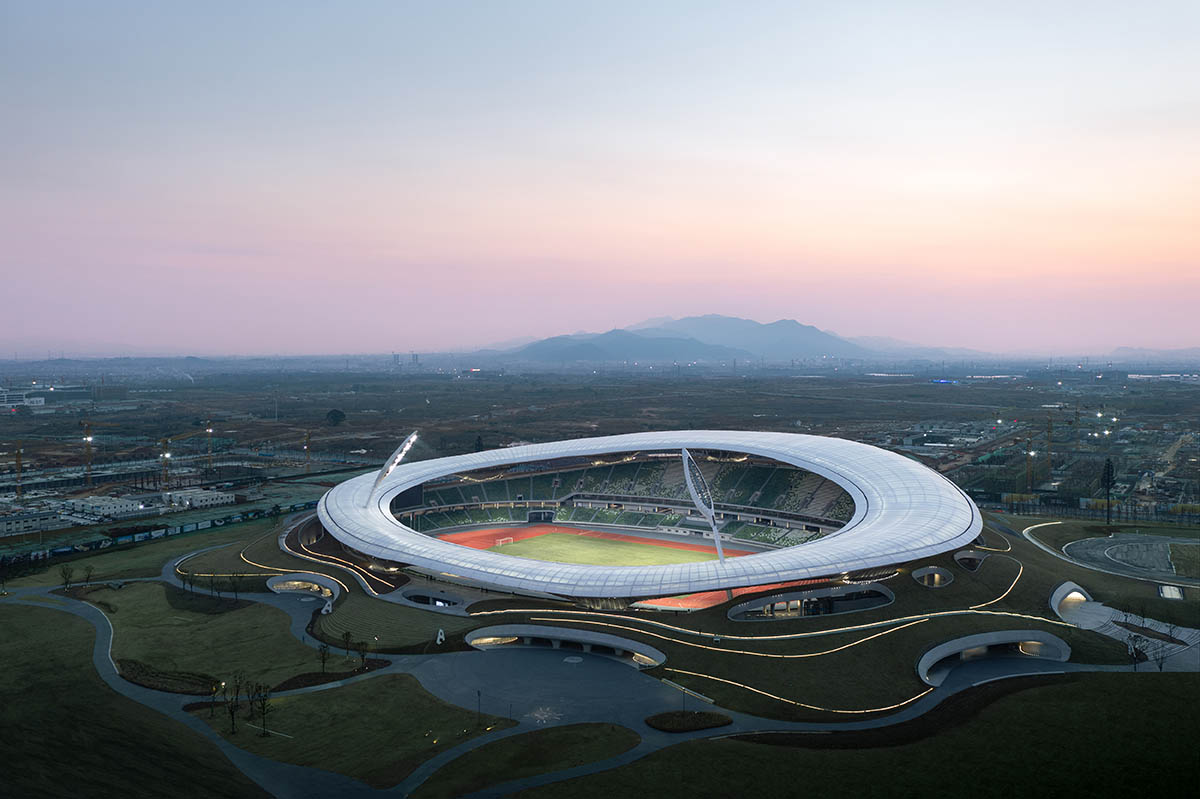
Image © CreatAR Images
Construction work is still underway at the site since 2018 and the completion of the stadium represents the first of two construction stages at the Quzhou Sports Park complex.
"Quzhou is a historic city 400 kilometers southwest of Shanghai and surrounded by dense forests to the east and west, its sinuous exterior profile reflects the mountain ridge within distant view of the site while its landscape evokes those of planets imagined by visionary science fiction authors," said MAD in its project description.
MAD designed the Quzhou Stadium to reflect as a continuation of the surrounding landscape rather than an object standing out against it.
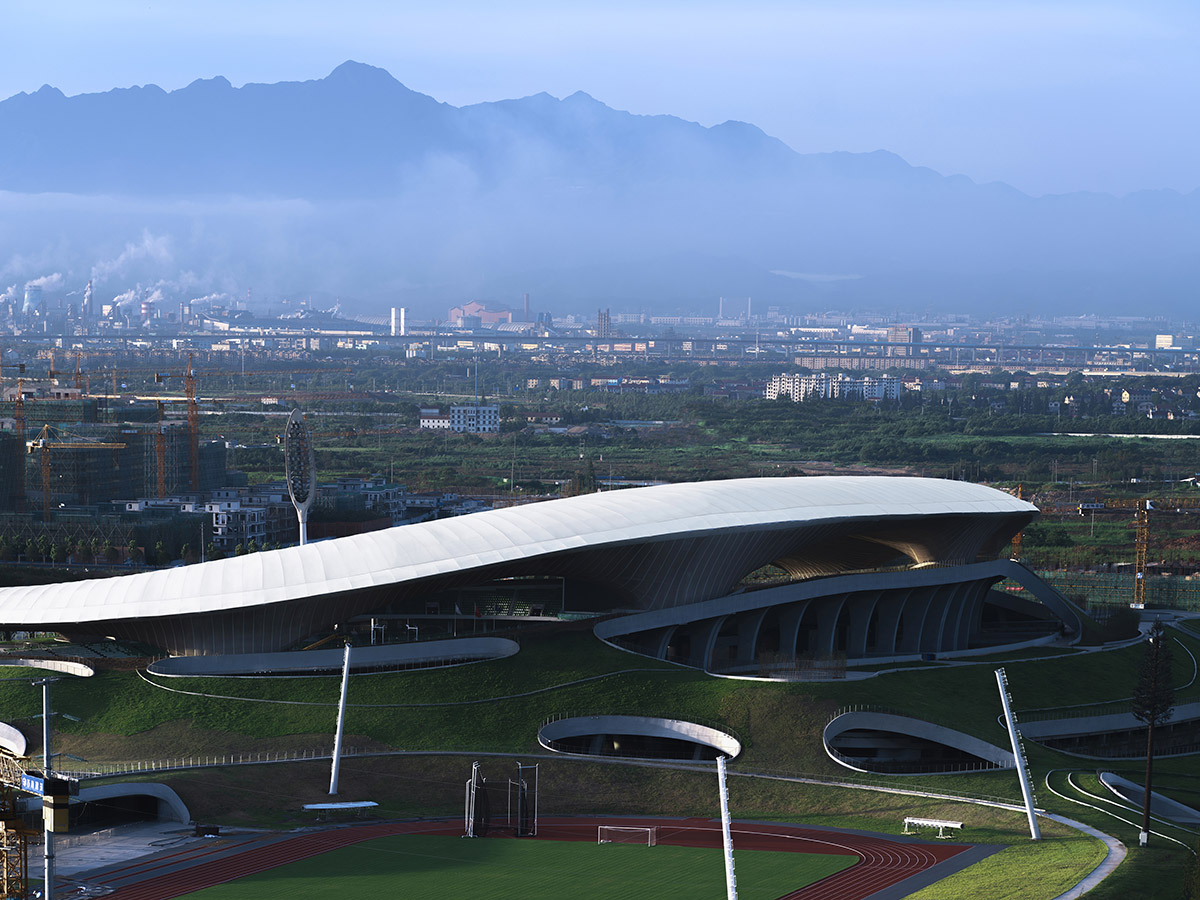
Image © Arch Exist
"A spiritual connection between people and nature"
The volumetric configuration of the stadium is different than "the typically fortress-like stadiums" built in urban areas around the world, as MAD explained.
MAD Architects was determined to build a stadium that would embed much of the technology that went into its production so that it can instead be open to the surrounding public space from nearly every angle.
The studio conceived the stadium grounds as not only a dynamic park space adjacent to the city’s urban center amenable to athletic and leisurely recreation, but also an opportunity for a spiritual connection between people and nature.
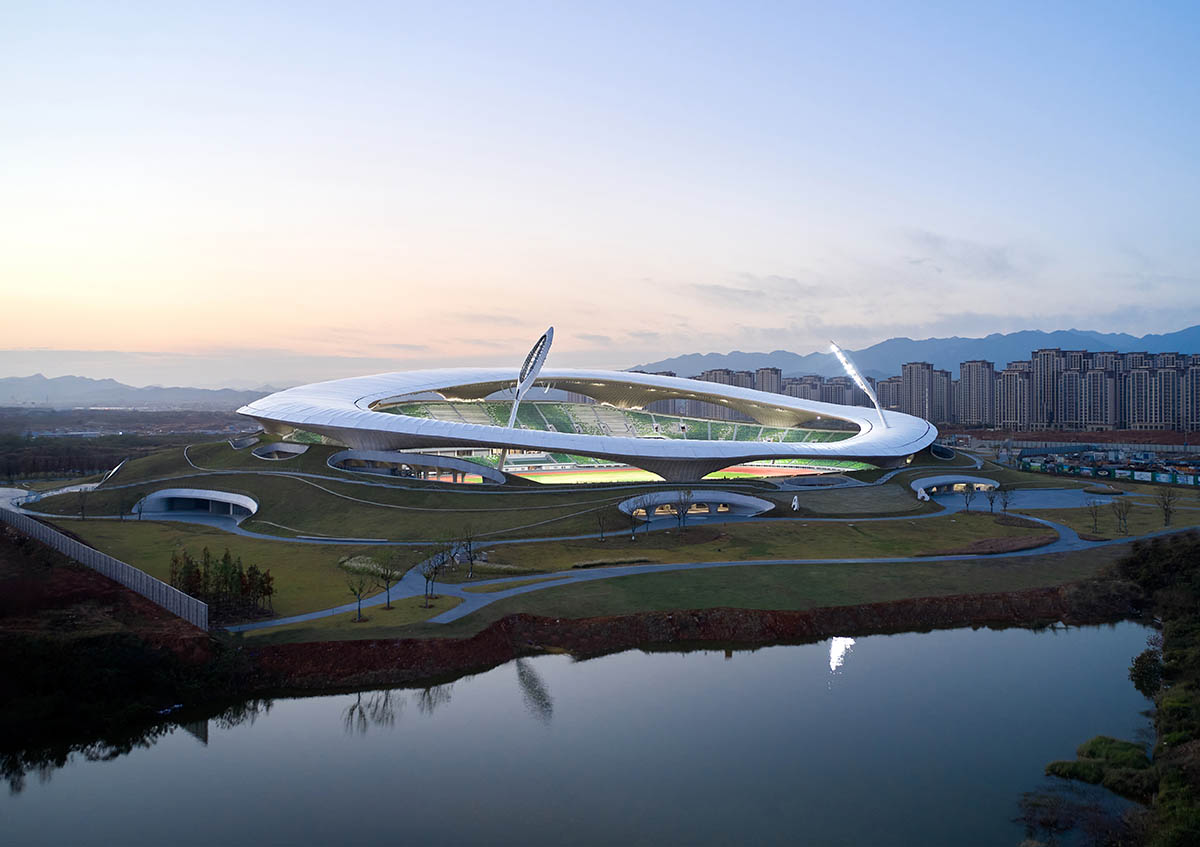
Image © Aogvision
"The Quzhou stadium breaks away from the conventional sports architecture," said MAD founder Ma Yansong.
"It is conceived as a piece of land art that submerges itself into the nature and welcomes everyone to gather and share the sports spirit," Yansong added.
With this concept in mind, the studio carried the undulations of the surrounding topography into the sloping facade. Thanks to this, visitors are encouraged to determine for themselves where the landscape ends and the building begins.
Even when the stadium is closed, visitors are encouraged to climb the structure and treat it as an active piece of the landscape.
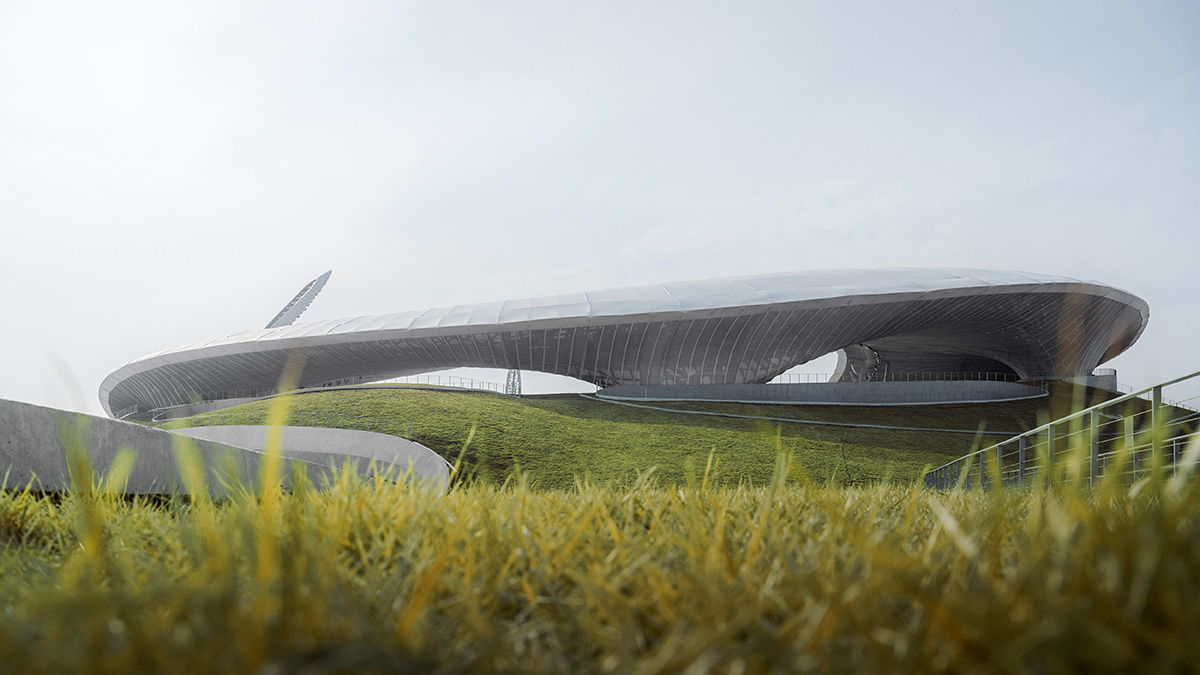
Image © CreatAR Images
The stadium is supported by a set of 60 concrete column walls and they are composed of exposed wood-grained fair-faced concrete sheet walls that bring the warmth feeling with texture to such material, and blur the boundary between interior and exterior.
The canopy onto the stadium is internally composed of self-supporting steel, onto which a translucent light-emitting membrane material was wrapped that could take on the complex geometry required for the long-spanning design.

Image © CreatAR Images
From a distance, the canopy appears like "a halo" hovering gently above the landscape. Visitors approach the stadium by walking through the canopy from one of eight entrances, all of which feature complex double-curved surfaces that ripple overhead like ocean waves.
The canopy is supported by only 9 drop points with a maximum span of 95 meters between them to allow the building to “float” over the landscape while offering framed perspectives of the city from many points of view.

Image © CreatAR Images
The canopy is made of a monumental steel frame, it appears lightweight due to the light-transmitting synthetic polymer PTFE membrane wrapped around the lower half of the structure that is composed of micro-perforations to improve the acoustic performance throughout the stadium.
On the other hand, the upper surface of the canopy is composed of a more solid PTFE membrane to prevent rain from entering the seating bowl.

Image © CreatAR Images
MAD preferred to use a sinuous geometry so that the seating configuration can continue within the stadium itself.
Accommodating up to 30,000 spectators, stadium presents "a crater-like interior" and offers glimpses of the city and mountain landscape beyond.
The shape of seating undulates in relation to the surrounding landscape, which it also simulates as an array of shades of green that visually contrast the white canopy structure above them.

Image © Aogvision
In addition to providing an intimate setting for spectatorship, the stadium was shaped around a wide array of sustainable design features.
Aside from the audience seating and arena, the majority of Quzhou Stadium’s facilities are located beneath the ground plane.
Thanks to large openings in the landscape, natural light penetrates into the parking garage, entry levels of the stadium, and other facilities.

Image © CreatAR Images
"A piece of land art"
"Across the entire structure, the stadium is engineered to absorb, store, and infiltrate rainwater, which will have the added effect of protecting the building from excess rain damage and leads to a substantial reduction in temperature fluctuations and energy consumption," MAD added.
The project is described "as a piece of land art", so the studio selects regionally-specific plants that would require little maintenance to promote water conservation.

Image © CreatAR Images
The outdoor signage for the stadium is composed of stone and metal and embedded within the ground plane to blend into the landscape.
MAD also used locally-produced concrete materials found throughout the site, to minimize the carbon footprint associated with the transportation of materials throughout the construction process.

Image © Arch Exist
"The design of the buildings placed throughout the park break away from the traditional way of highlighting the structural strength of athletic facilities to instead convey a subtle inner beauty," MAD added.
When complete, Quzhou Sports Park will become the largest earth-sheltered complex in the world.

Image © Aogvision
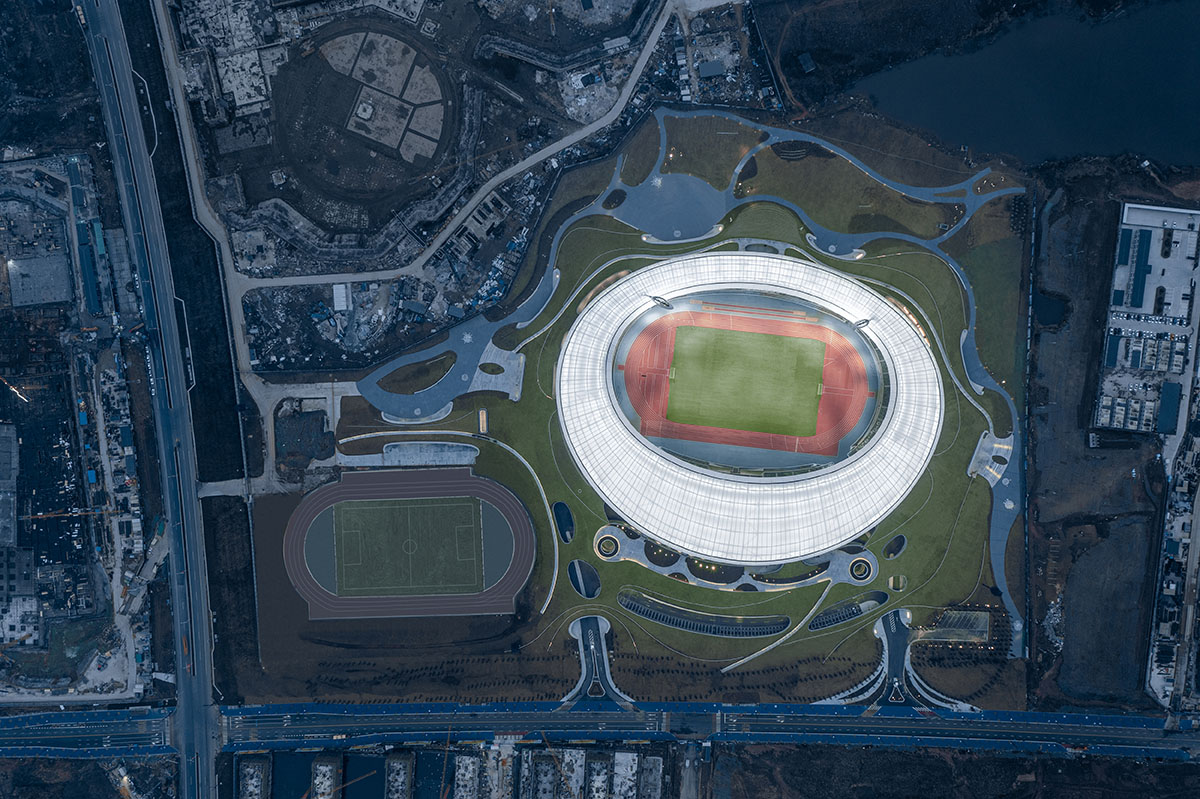
Image © CreatAR Images

Image © Aogvision
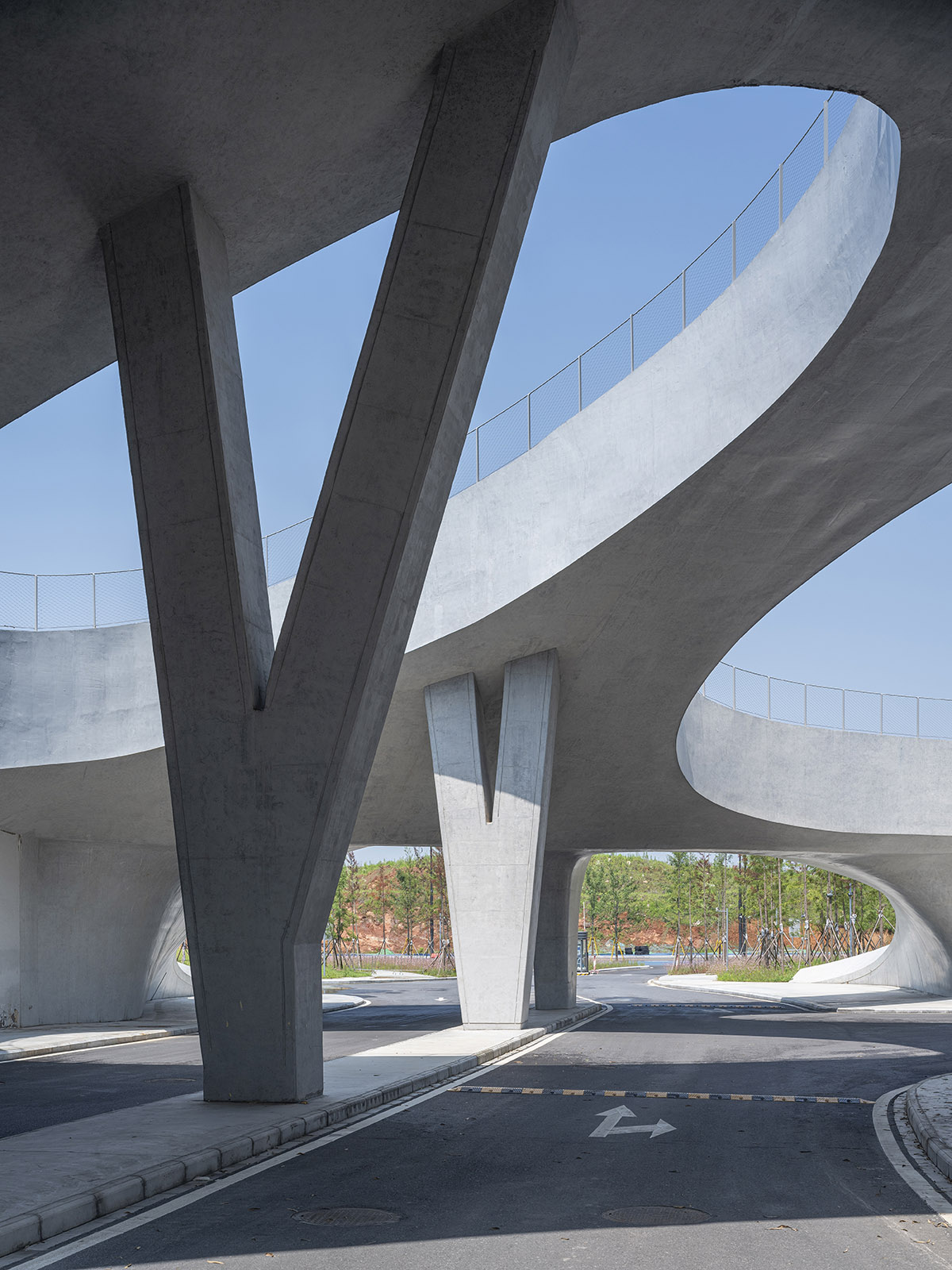
Image © Tian Fangfang
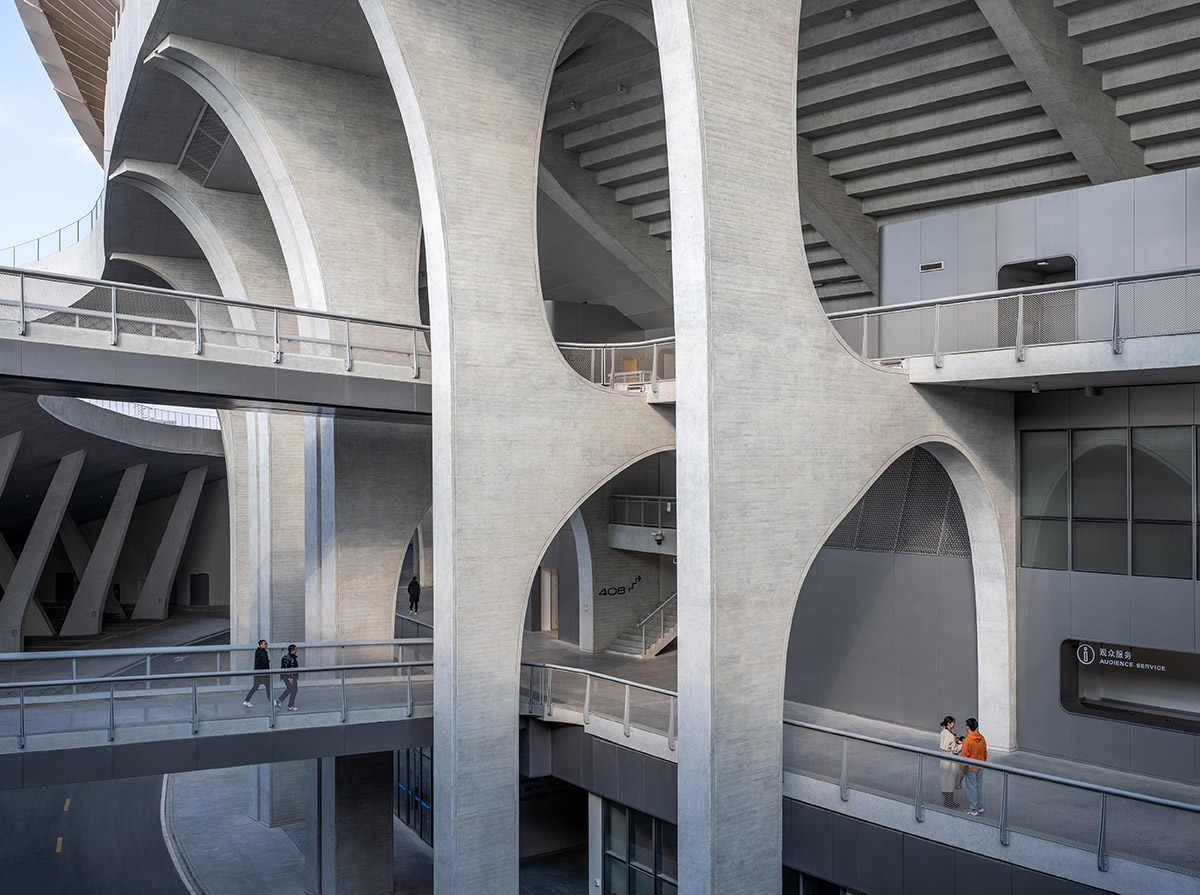
Image © CreatAR Images

Image © Aogvision

Image © Arch Exist
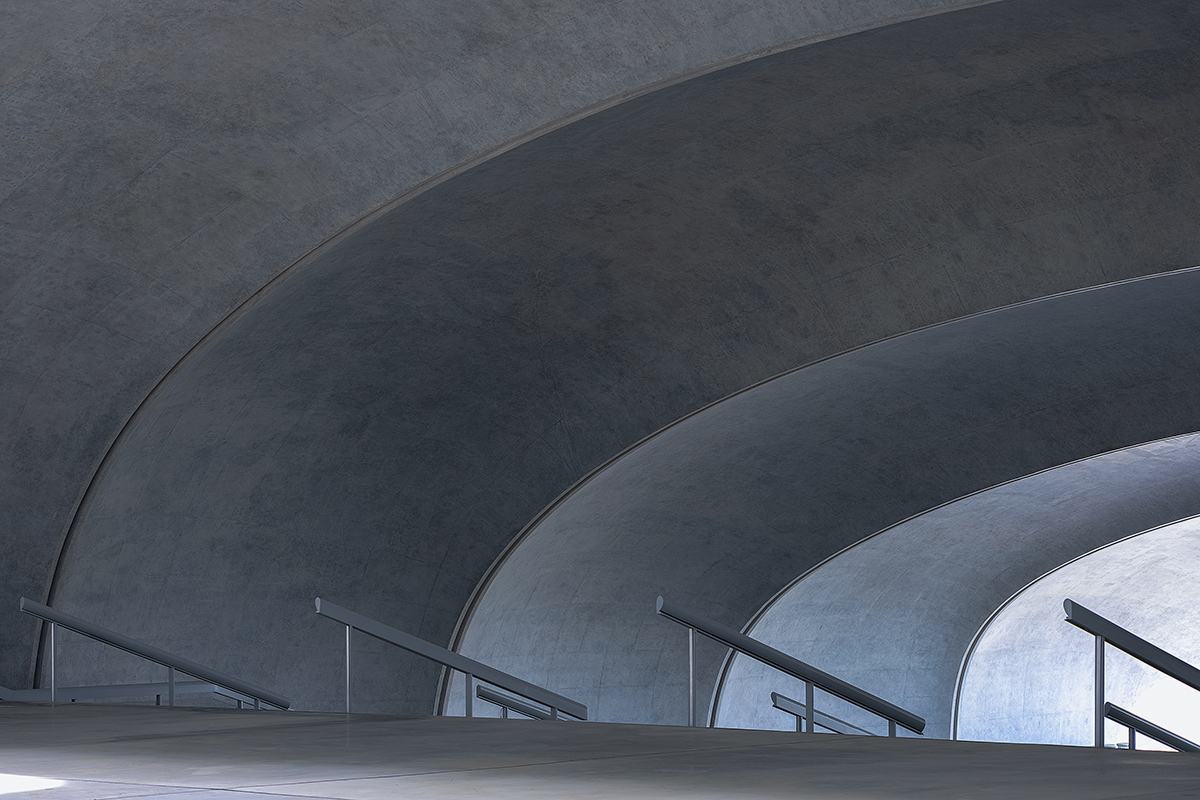
Image © Arch Exist
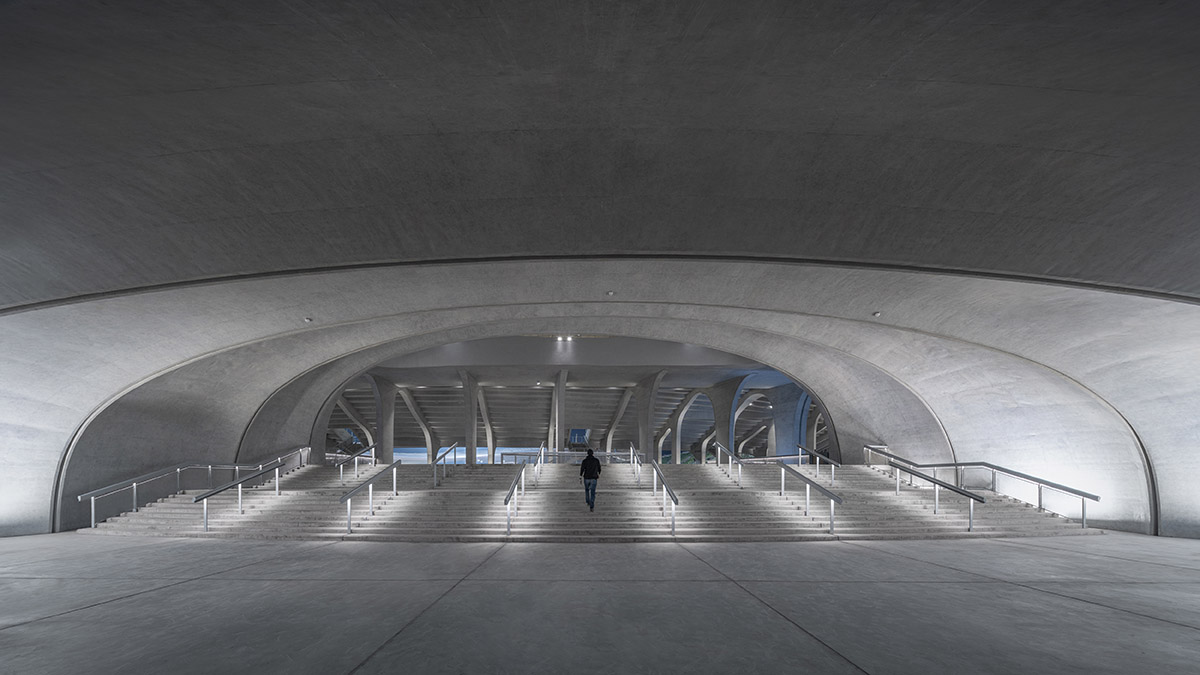
Image © CreatAR Images

Image © CreatAR Images

Image © Aogvision

Image © CreatAR Images

Seating Pattern Diagram
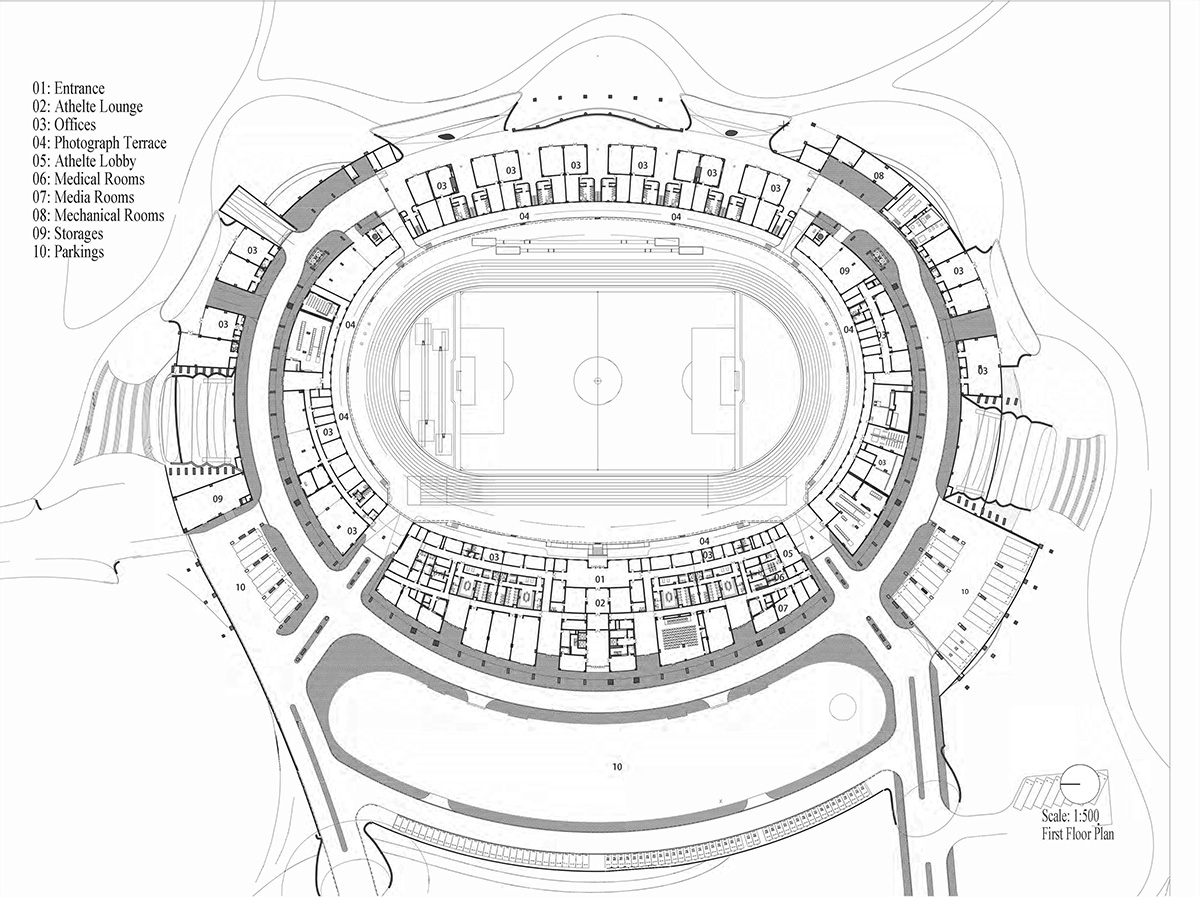
Ground floor plan
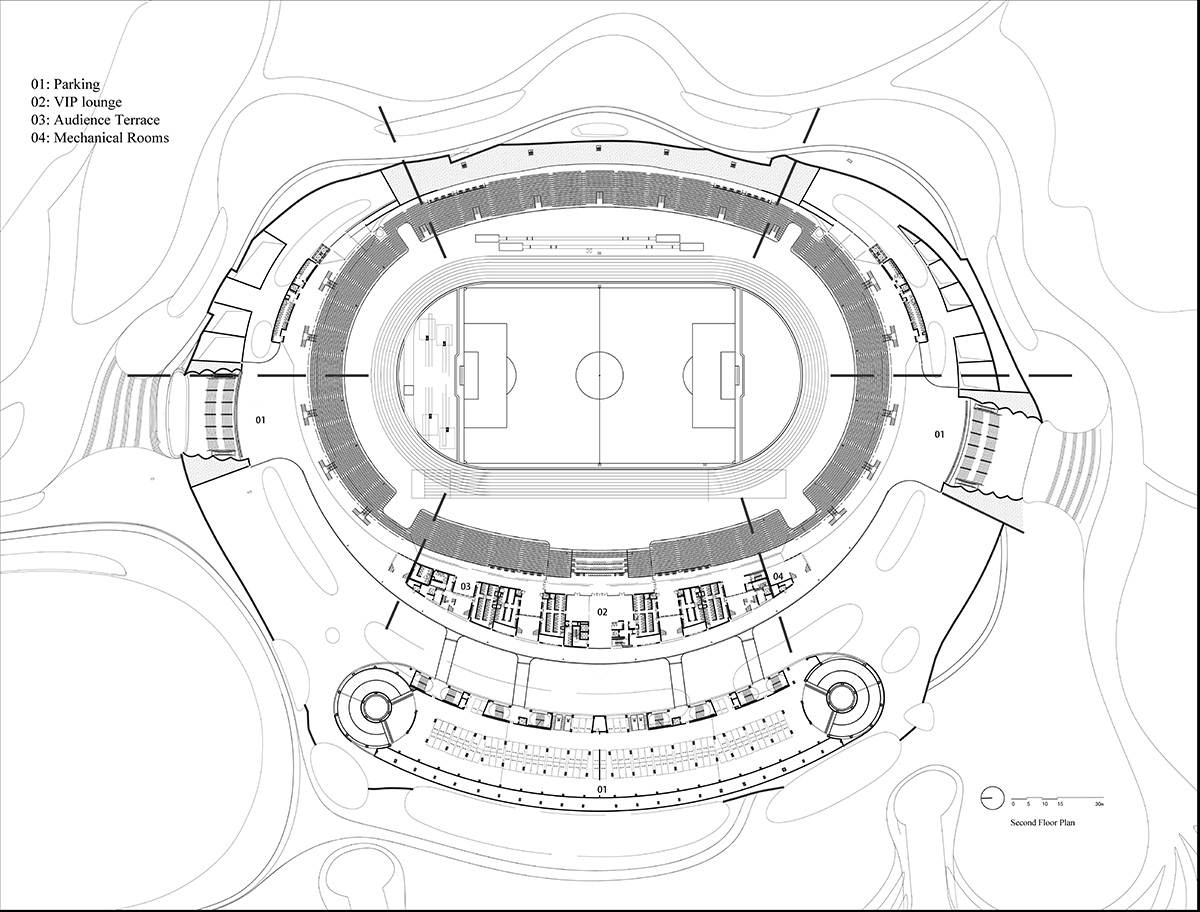
Second floor plan

Canopy, axonometric drawing
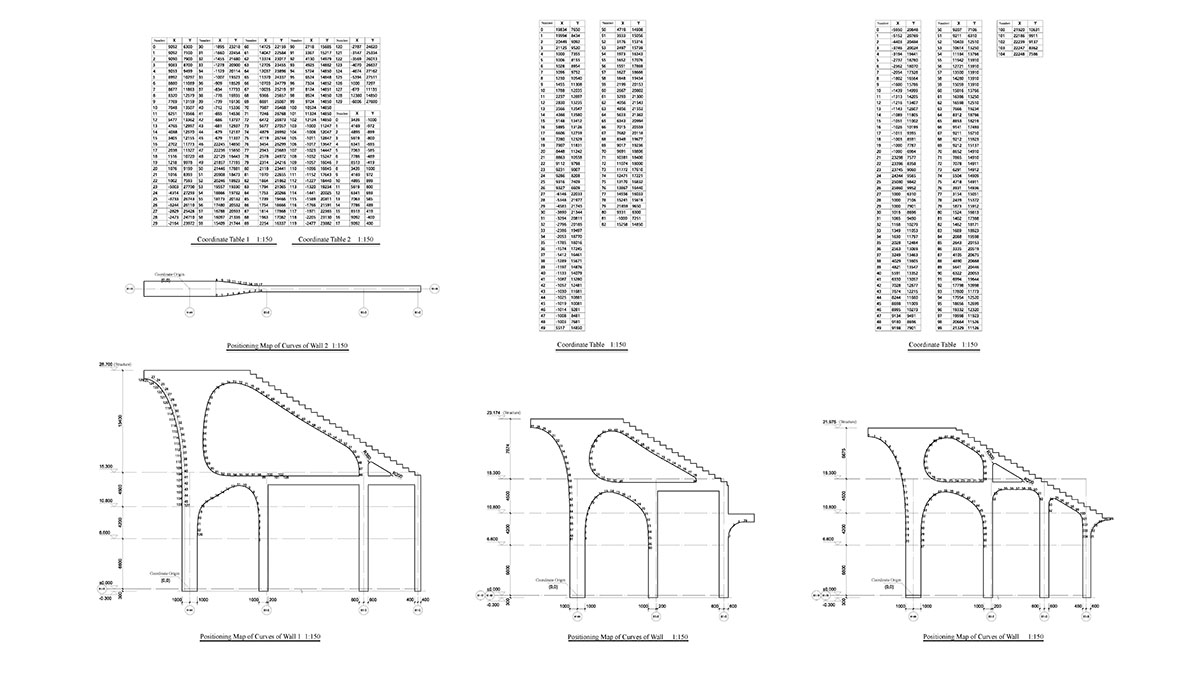
Concrete wall detail

East and west elevations

Grass slope detail

North and south elevations

Section
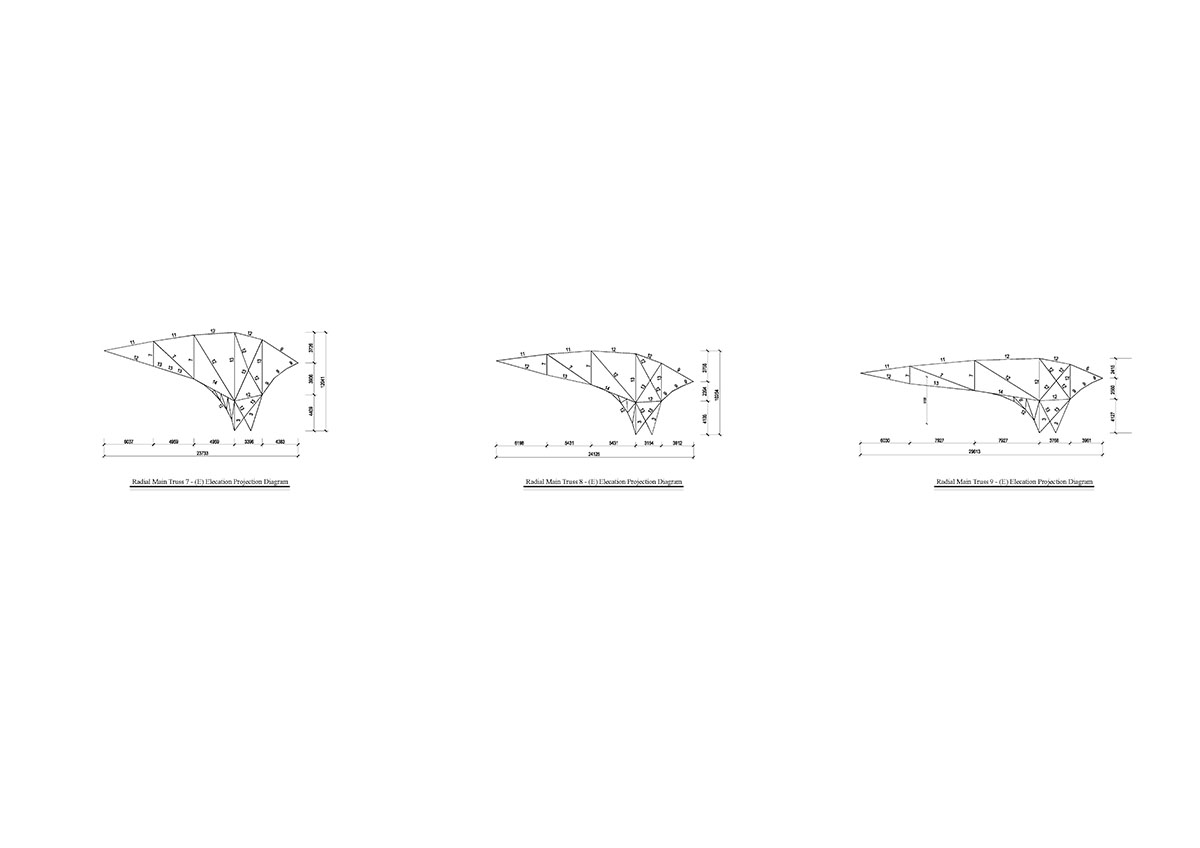
Stadium truss
MAD's Aranya Cloud Center is also under construction in Qinhuangdao, China. MAD recently completed its curvilinear UNIC apartment block in Paris, France.
Project facts
Project name: Quzhou Stadium
Architects: MAD Architects
Location: Quzhou, China
Date: 2018 – 2022
Typology: 30,000seats Stadium, Sports and recreational facilities
Stadium Site Area: 33,731 square meters
Stadium Building Area: 58,565 square meters
Quzhou Sports Park Masterplan Site Area: 610,556 square meters (Phase One: 327,370 square meters; Phase Two: 283,186 square meters)
Quzhou Sports Park Building Area: 390,074 square meters (Phase One: 269,474 square meters; Phase Two: 120,600 square meters)
Principal Partners in Charge: MA Yansong, DANG Qun, Yosuke HAYANO
Associate Partners in Charge: LIU Huiying, Kin LI, FU Changrui
Design Team: XU Chen, LI Cunhao, LI Guangchong, LI Gang, Iting LIEN, Kyung Eun Na, MA Yin, Thoufeeq AHMED Alessandro FISALLI, LI Hui, Tian JIN, ZHANG Kai, MA Yue, Melanie Weitz, ZHOU Haimeng, XIAO Yuhan, Yuki ISHIGAMI, Luis TORRES, SU Le, KANG Wenzhao, Pittayapa SURIYAPEE, YU Lin, Neeraj MAHAJAN, ZHANG Bo, Connor HYMES, ZHANG Yufei, WANG Qi, SONG Minzhe, CAO Xi, LIU Hailun, ZHANG Xiaomei, ZHENG Kangcheng.
Client: Quzhou West District Development Committee, Quzhou Baoye Sports Construction and Operation Co., Ltd
Executive Architect: CCDI Group
Landscape Architect: PWP Landscape Architecture, EADG, Yong-High Landscape Design Consulting Co.Ltd
Structural Engineer: Schlaich Bergermann Partner
MEP Engineer: SC Consultants Limited
Façade Consultant: RFR Asia
Lighting Consultant: Ning's Field Lighting Design
Signage Design: Kenya Hara (Nippon Design Center, Inc.)
Top image © CreatAR Images.
All drawings © MAD.
> via MAD
